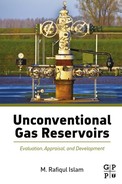6.6. Organic and Mechanical Frequencies
Considered in its most general aspect, the universe comprising all phenomena can be comprehended as comprising two broad categories: the mechanical and the organic. Many mechanical phenomena can be found within the organic category. Certain aspects of many organically based phenomena can be defined or accounted for entirely within the category that comprises all forms of mechanism. Frequency, and its measurement, often appears to bridge this mechanical–organic divide. Organically based frequencies have an operating range which itself varies, e.g., the length of the lunar year. On the one hand, purely mechanical frequencies also have an operating range, and this range can be set or otherwise manipulated up to a point, e.g., the resonant frequency at which a bridge structure may collapse in a sustained high wind. On the other hand, although organically based frequencies can be detected and measured, there is usually little or nothing, beyond a very definite window that must be determined by trial and error, which can be done to manipulate such frequencies.
Since Galileo's brilliant and successful deployment of an elaborate water clock as an organic-frequency device for measuring with some precision the differential rates of descent to earth of freely falling masses of different weights, all kinds of apparently natural clocks have been deployed to calibrate many things. This includes even universal standards of the metric system, e.g., the cesium atom clock at a Paris laboratory used for setting the standard length of the meter.
Problems arise when such frequency-based devices are treated as the generator of values for a variable that is treated as being independent in the sense that we take Newton's fictional time variable t to be varying “independently” of whatever phenomenon it is supposed to measuring/calibrating/counting. Outside of a tiny instantaneous range, e.g., the period in which Δt approaches zero, naturally sourced frequencies cannot be assumed to be independent in that way. This is a false assumption whose uncritical acceptance vitiates much of the eventual output of the measuring/calibration effort.
Such problem arises the moment one makes the phenomenal assumption that frequency is fixed. That's the idea behind the unit of “second” for time (solar orbit to cesium radiation frequency). New Science fixed the frequency (it is like fixing speed of light), then back-calculated time. No wonder, later on, time was made into a function of perception (relativity) thereby making the unique functionality schizophrenic. Not only is it the case that “such a problem arises the moment you make the phenomenal assumption that frequency is fixed.” Even if you allow that t is not fixed and undergoes changes in value, i.e., that its frequency is not necessarily fixed, this problem persists if the subtler but still toxic assumption is accepted that the rate at which the variable t changes, Δt, is constant in some “continuous” interval over which the derivative df(t)/dt may be taken. Here is where we uncover the truly toxic power of Newton's laws of motion over conscience-based consciousness. That is when they invoke “known” function, which itself is aphenomenal. The only function that is valid is with infinite order of periodicity (this is beyond chaotic).
..................Content has been hidden....................
You can't read the all page of ebook, please click here login for view all page.
